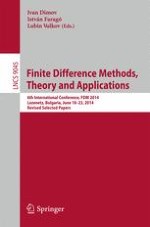2015 | Buch
Finite Difference Methods,Theory and Applications
6th International Conference, FDM 2014, Lozenetz, Bulgaria, June 18-23, 2014, Revised Selected Papers
herausgegeben von: Ivan Dimov, István Faragó, Lubin Vulkov
Verlag: Springer International Publishing
Buchreihe : Lecture Notes in Computer Science
